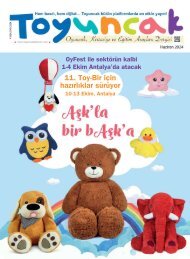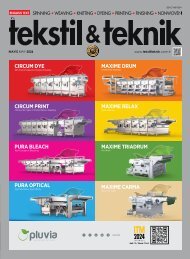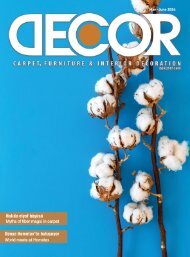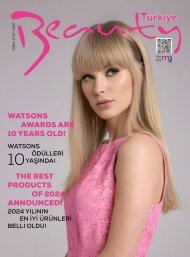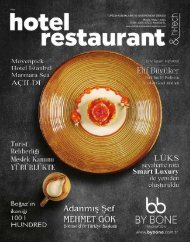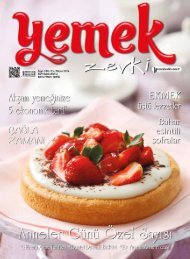You also want an ePaper? Increase the reach of your titles
YUMPU automatically turns print PDFs into web optimized ePapers that Google loves.
Milas Carpet, one of
our cultural treasures
Our journey is to Caria or land of Caria. In short,
Caria is the ancient name of the geography covering
the south of the Büyük Menderes River and the inner
and northern parts of Muğla. With its history dating
back to the Greeks’ establishment of colonies in the
Aegean, Karya also attracts attention as the homeland
for Milas
carpets. Although
it was previously
discussed whether
the carpet is here,
it is said that the
Turkish carpets
started to develop
in the region which
was captured by
the Turks in the
11th century and
later, especially in
the 13th century
and later. Like any
artwork that has
undergone different
changes over time,
Milas carpets have
taken a distinctive
shape in the 16th
century and later.
Especially between
the 16th and 17th
centuries, with the
intense handcrafts
we found in Anatolia,
Milas Carpet
came to the fore.
Milas Carpets, which
are handled by Yörüks like other different types of
carpets in the region, appear before us as small sized
fabrics for quick recovery and easy portability. Over
time, Milas Carpets, which vary in sizes according to
the demands of the merchants, opened the Oriental
Carpet by the British in the 19th century. The increase
in vegetative decoration and insertion of the navel in
Milas carpets coincide with this period.
Technical characteristics of Milas carpets
Milas carpets are woven with wool by double knot
technique. Milas Carpet, which has been colored with
root dyes for centuries, has been woven in looms
called “ıstar” while preserving the tradition of fame
and root paint. Weaving, which can be detected in
many villages of Milas
and Muğla, is carried
out by two producers in
the villages of Karaova,
Karacahisar, Ören,
Türkevleri, Çökertme,
Bozalan, Kayaönü, Gürceğiz,
Bayır, Mumcular
and Çitlik.
Milas carpets, carpets,
as well as patterns that
give the name of the
region has many motifs
specific to the region.
Some of these are
known as colorful beads,
dog tracks, chicken legs,
hand on hips, cloves,
legumes, eggplants,
tobacco leaves, sailor juice,
rattling Cafer, crab,
snake, tree of life, saw,
key, lake, oil lamp.
Milas carpets are generally
woven in three
dimensions. The most
commonly woven size of
prayer rugs is an average
length of 120 x 200
cm. The size of the carpets
called floor carpets is a multiple of the size of the
prayer rugs and is about 210 x 350 cm. Between the
prayer rug and the floor carpet, there is an intermediate
size carpet called half-floor.
The carpets, called quarter carpets, are about half
the size of the prayer rugs and are about 90 x 140 cm
in size.
12 DECOR • January - February 2020



